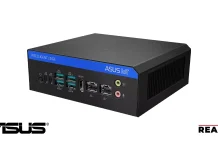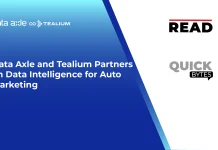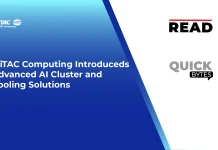Imagine this: You’ve just received an urgent medical emergency, and as a healthcare professional, you need access to vital patient records immediately. You rush to the file room, only to find it in complete disarray. Patient files are misplaced, some are missing, and the chaos threatens to delay critical care. It’s a situation as distressing as a medical emergency itself.
This is where a medical document management system steps in as the remedy. Forward-thinking healthcare institutions have embraced this software solution to streamline their processes, much like a painkiller provides quick relief for a headache.
In the following discussion, we’ll explore why medical organizations need well-implemented medical document management software, how this solution works, and the most effective way to develop one that aligns with your specific requirements. Let’s get started.
What are Medical Documents Management Systems?
A Medical Documents Management System is like a specialized computer program designed to make handling medical documents easier. These documents can include things like patient notes, medical charts, bills, insurance papers, and financial records.
According to the report published by Extrapolate, the Medical Documents Management Systems Market is expected to reach up to USD 995.38 million by 2030. This staggering number is indicative of the potential growth projected for this industry.
Here are the key features of these systems:
- Storing and Organizing Documents: They provide a central place to store and arrange all these medical documents so that it’s simple to find what you need when you need it.
- Streamlining Workflows: They can help automate tasks like sending documents for review, assigning jobs, and keeping track of where a document is in the process.
- Keeping Things Secure and Compliant: Since medical documents often have private patient information, these systems put a big focus on keeping that info safe and following rules like HIPAA. They might have things like access controls, encryption, records of who’s looking at what, and checking who’s allowed to use the system.
- Working Well with Other Systems: Medical document management systems can connect with other medical systems, like electronic health record systems, financial software, and billing systems. This helps in moving documents around smoothly and sharing data easily.
- Searching and Finding Stuff: These systems usually have powerful search tools, so you can quickly locate specific documents or information inside them.
- Collaboration and Sharing: They let healthcare professionals collaborate by having many people work on the same document at once and safely sharing documents with the right people.
How do Medical Documents Management Systems Ensure Data Security?
Medical device document management takes several steps to ensure data security. Here’s how these systems do it:
- Access Control: They make sure that only the right people can access sensitive medical documents. This is often done through usernames and passwords to confirm a user’s identity and grant them the correct level of access.
- Encryption: They use encryption to safeguard data when it’s being sent or stored. Encryption turns data into an unreadable form that can only be understood with the right encryption key, protecting patient info from unauthorized access.
- Audit Trails: Medical document management systems keep records of who accessed documents when they did it, and any changes made. This helps detect any unauthorized access or suspicious activities.
- Data Backup and Recovery: They regularly create copies of data to ensure documents aren’t lost in case of system problems, disasters, or data breaches. If needed, this backup data can be restored.
- System Validation: They go through testing and verification processes to make sure they’re secure and meet the required standards. This helps guard against potential vulnerabilities.
- Compliance with Regulations: Medical documents management systems follow specific rules and standards, like the Health Insurance Portability and Accountability Act (HIPAA) in the United States. HIPAA sets guidelines for safeguarding electronic protected health information (ePHI) and requires strong security measures.
- Physical Security: In addition to digital measures, they may be hosted in secure data centers with restricted access, surveillance systems, and other physical security to protect the servers and infrastructure.
It’s important to remember that the exact security features and practices can differ between different medical document management systems. Organizations using these systems should also follow good data security practices and regularly update their security to tackle new threats and vulnerabilities.
What is the Best Healthcare Document Management Software?
Wondering which healthcare document management software to go for? Now that you’ve got the basics of medical documents management systems, here are some well-regarded options in the industry:
- Allscripts: It offers a comprehensive suite of healthcare IT solutions tailored to individual client needs. From top-notch electronic healthcare records to financial management and operational tools, Allscripts keeps your healthcare facility running smoothly.
- Cerner: With over 40 years in the healthcare software field, Cerner’s enterprise document management software securely stores and organizes everything from patient details to electronic signatures.
- Digitech Systems: Its enterprise content management works hand-in-hand with existing electronic health record systems to transition your important document management to the digital realm. Plus, it is HIPAA-compliant, supporting remote work and telehealth while reducing environmental impact.
- eClinicalWorks: It offers PRISMA, an EHR interoperability solution suitable for both small clinics and hospital systems. It consolidates patient, insurance, and wearable device information into one comprehensive record.
- eFileCabinet: eFileCabinet’s Rubex is HIPAA-compliant, requiring minimal customization. It enforces password conditions and regular password changes to reduce the risk of data breaches.
- Epic: It provides an extensive range of services and software tailored to the needs of healthcare providers. It offers an optimized data integration platform that centralizes patient data for efficient reporting, all designed for performance and simplicity.
Final Thoughts on Medical Documents Management Systems
Choosing the right healthcare document management software is a critical decision for any healthcare facility. Each of the options mentioned has its strengths and can be tailored to specific needs. By evaluating your facility’s requirements and considering factors like ease of use, security, and integration capabilities, you can make an informed choice that streamlines document management and enhances the efficiency of your healthcare operations.
Browse More Posts:-
Bread Improver Market
Bluetooth Speakers Market
Bakery Machine Market
B2B Floor Cleaning Robots Market




